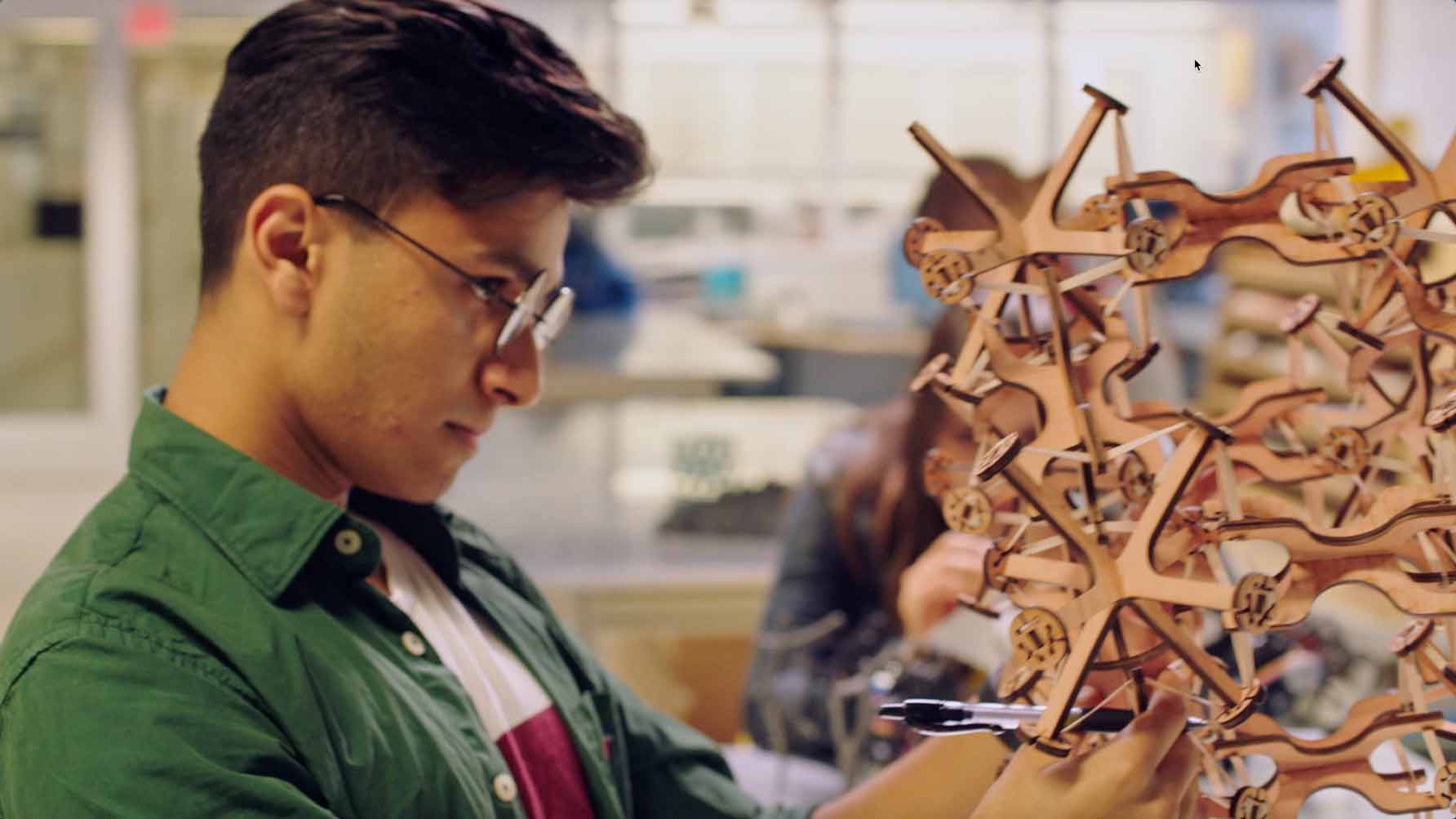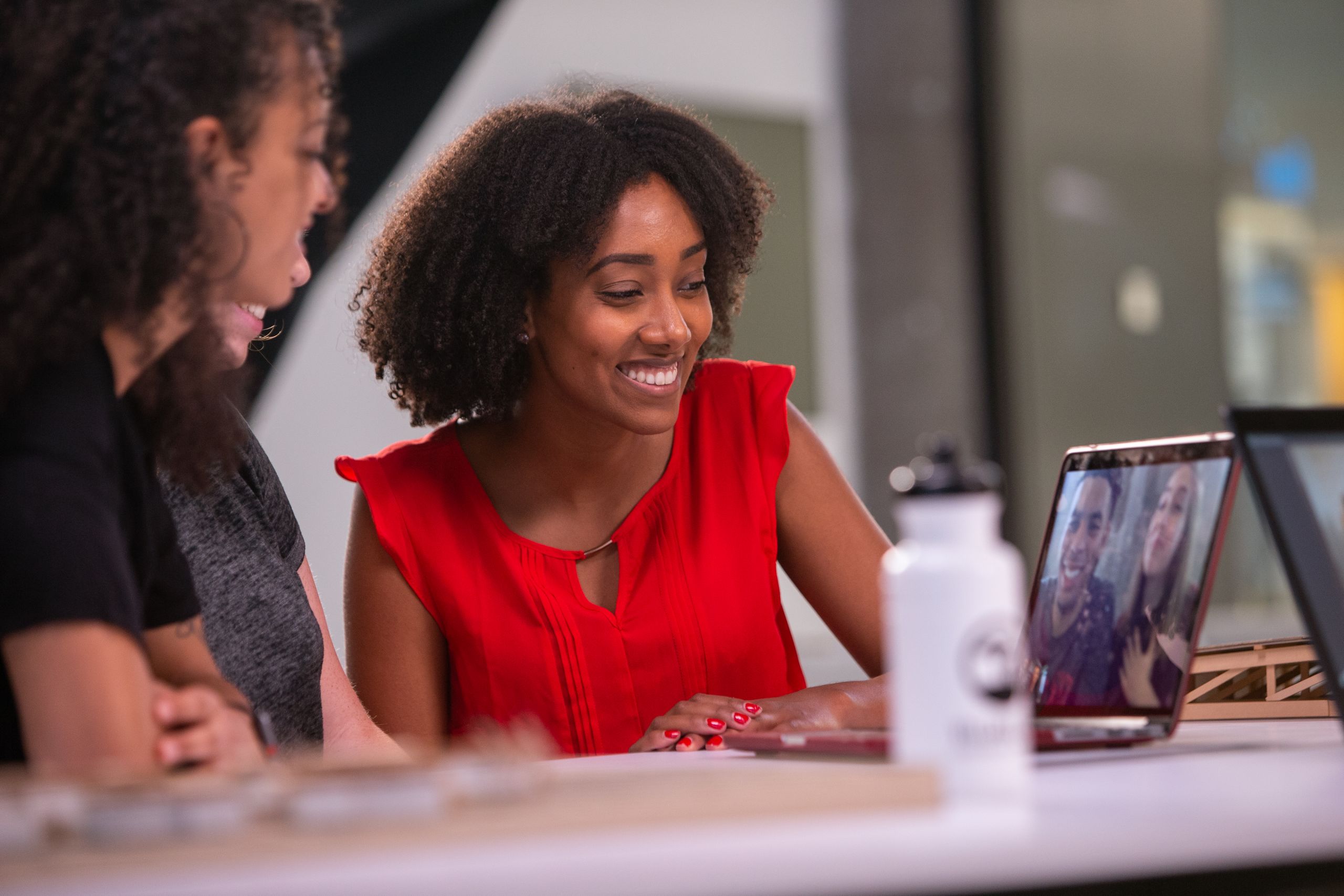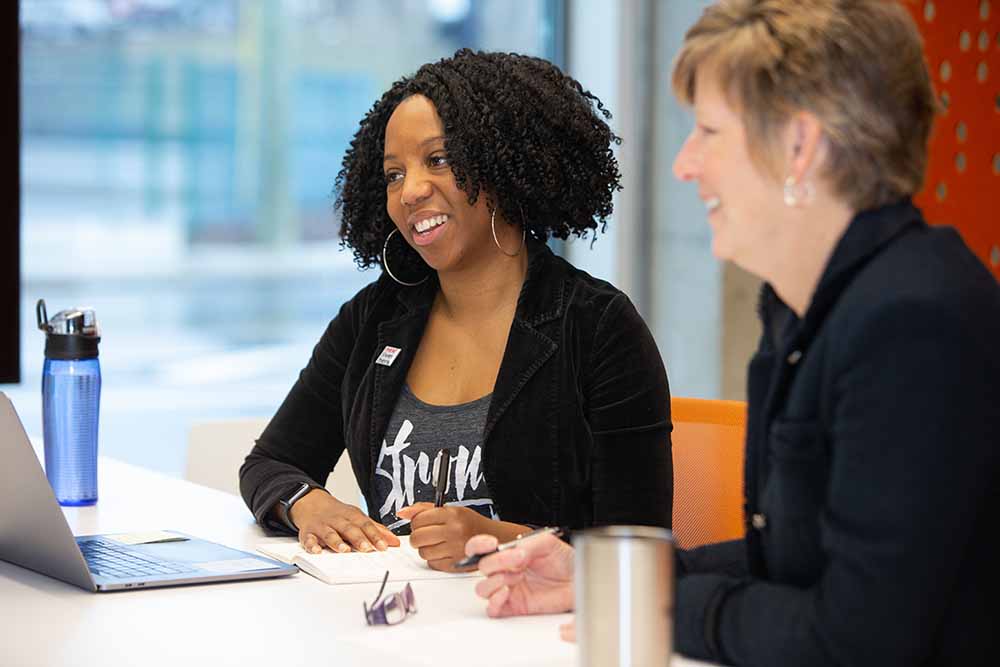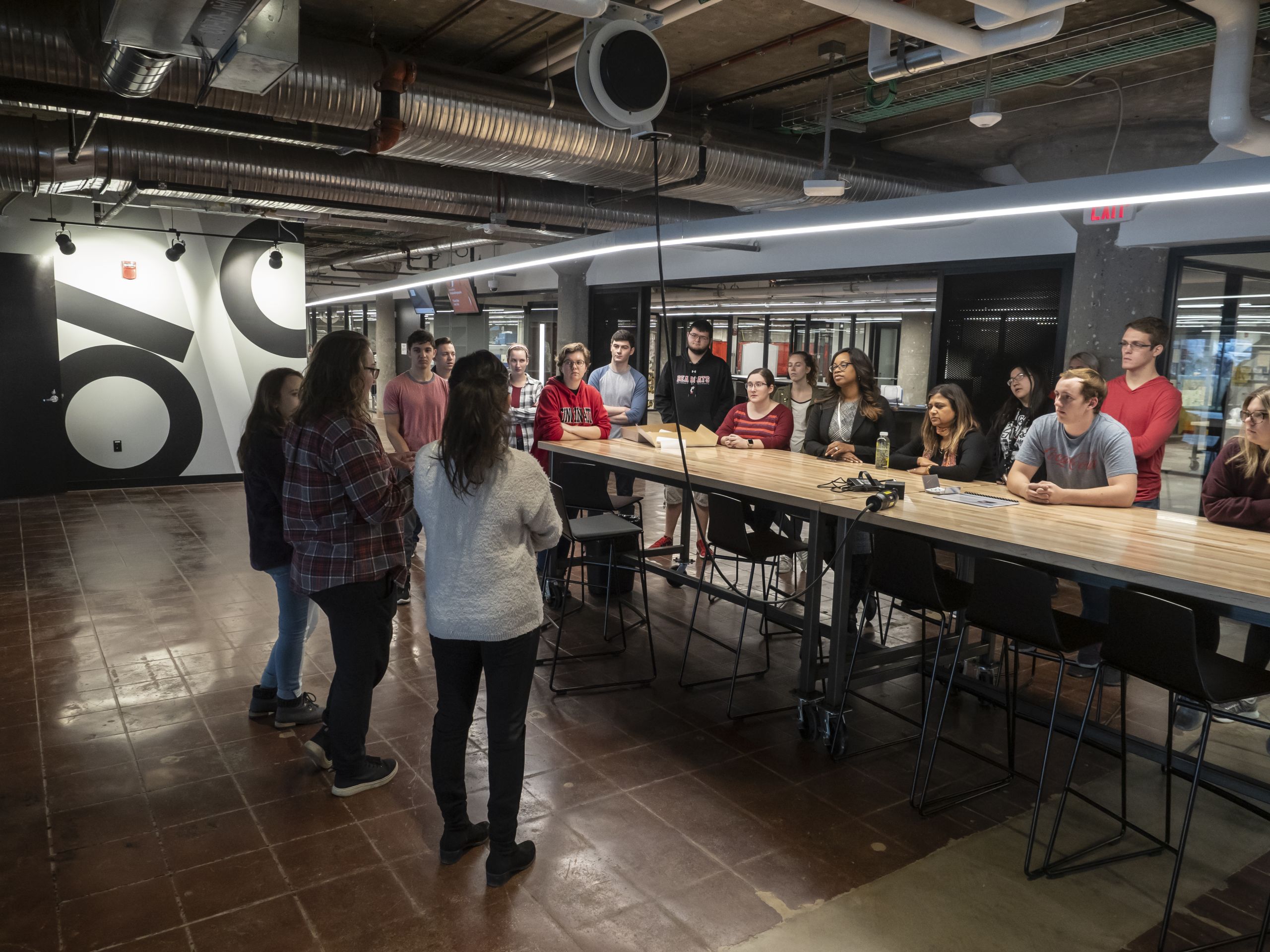Learn and launch:
Where industry meets university


The first oral polio vaccine.
The first heart-lung machine.
The first antihistamine.
Since its founding in 1819, University of Cincinnati alumni and faculty innovations have changed the world time and again. The bicentennial has been a time of reflection for the UC community, a time to look back on its rich history of innovation.
But it’s also a time to think about what’s Next.
Its name inspired by the university’s past, UC’s 1819 Innovation Hub is about the future — the region’s destination for thinking, making and doing, for discovery and delivery, where the future meets the university and where the university meets the world.
Navigating UC’s 14 colleges and more than 6,800 full- and part-time faculty members was once a major challenge for companies that wished to tap into UC talent. The 1819 Innovation Hub provides one front door for business and industry partners to connect with students, faculty, staff, alumni, and each other.
The 1819 Innovation Hub is at the heart of the university’s strategic direction, Next Lives Here. It’s the physical manifestation of UC’s vision to lead public urban universities into a new era of innovation, impact and inclusion, and it’s the cornerstone of an innovation district that is bringing together industry and UC talent — faculty and students alike.
“Innovation can be taught,” explains UC Chief Innovation Officer David J. Adams. “Companies of all sizes know this and are co-locating near major research universities to not only teach themselves, but teach potential future employees how to innovate. Learning has to be a mindset, not a major. Through the university’s new strategic direction, we are reframing learning. When students are inspired, they motivate everyone around them.”
FULL SPEED AHEAD

After securing the patent for his first engine in 1878, it took Karl Benz nearly a decade to get the world’s first production automobile to market. Innovation in today’s world can no longer take decades, or even years. As our Next-minded President Neville Pinto says, “Life is faster. The globe is smaller. Technology is smarter. Expectations are higher. The pace of change is hyper-realized.”
The UC Venture Lab in the 1819 Innovation Hub and its startup accelerator program give faculty, students and businesses the space and the tools to get from ideation to the point of attracting outside talent and capital in a matter of weeks.
“The traditional system for most university startups is based on a faculty researcher with a patent, and it could take three or four years to gain momentum,” says serial entrepreneur and professor Jason Heikenfeld, assistant vice president in UC’s Office of Innovation. “Realistically, we have a different world every three or four months in most industries. The value proposition changes quickly.”
Reneé Seward had been working on her business for years before she joined the Venture Lab. An assistant professor with the UC College of Design, Architecture, Art, and Planning, Seward had been developing an interactive tool for children with dyslexia and other at-risk youth to help them learn to read, spell, and pronounce words, while building basic literacy skills.
Venture Lab gave Seward the tools to get See Word Reading to market in just seven weeks. The program connected her with the 1819 Innovation Hub’s network of more than 40 entrepreneurs in residence. Venture Lab helped Seward secure $40,000 in grant funds, and it connected her with its network of more than 40 entrepreneurs-in-residence — executives from the corporate and startup worlds with track records of success.
“The goal is that one or more want to jump into the CEO seat, help you think through the business model and get it to market,” says Seward. “Without the support and education provided by Venture Lab, I would not have been able to launch my business."
“Entrepreneurial success at UC happens when innovation, downright determination, and critical startup resources all collide," Heikenfeld says. "Reneé brought the former two to the 1819 Venture Lab, where UC connected the latter, and when that happened, this opportunity absolutely caught fire.”
In lieu of walking across a stage and receiving a diploma, each Venture Lab company presents their business idea to a room full of entrepreneurs-in-residence, along with faculty, students, and guests from the business community. Not all Venture Lab companies go straight to market after graduating. Unlike a typical startup pitch day, Venture Lab’s companies include in their presentations the things their businesses still need in order to succeed, such as specialized talent. By design, the graduation ceremony attracts more than just venture capitalists and angel investors. Anyone in the room — engineering students, marketing faculty or UC staff — could hear a need that they can address.
“The whole point of the graduation day is not to pitch for funding, like at a traditional demo day,” says Heikenfeld. “It’s about trying to get people excited about what you’re working on so that they’ll come help you get that technology out of the university setting.”

Jason Heikenfeld, assistant vice president in UC’s Office of Innovation.
Jason Heikenfeld, assistant vice president in UC’s Office of Innovation.

Reneé Seward, assistant professor with the UC College of Design, Architecture, Art, and Planning.
Reneé Seward, assistant professor with the UC College of Design, Architecture, Art, and Planning.
BRACE FOR IMPACT

UC’s new approach to tech transfer has changed the focus from guessing which ideas will work to getting more ideas out the door. By letting the market pick the winners and losers, UC has been able to increase focus on leveraging 1819 as the connector to outside resources, which has already quadrupled its startup output.
UC’s focus on innovation has made the world take notice. Just a week after 1819 opened in October 2018, Reuters announced it now counts the university among the World’s Most Innovative Universities, checking in at No. 80. According to Reuters, "the list identifies and ranks the educational institutions doing the most to advance science, invent new technologies and power new markets and industries.”
UC’s next move? Bringing researchers and industry even closer together. Directly across the street from the 1819 Innovation Hub is the future home of UC’s 180,000-square-foot Digital Futures space, where researchers will tackle the increasing digitally enabled, human-centered challenges that are arising in today’s world. Research examining sensors, robotics, smart transportation, cybersecurity, artificial intelligence, augmented and virtual reality, and quantum computing will be a stone’s throw from where the technologies can be commercialized.
“Cincinnati’s growing innovation district gives talent-hungry companies across the globe access to UC students, faculty, and research, along with ongoing education for their workforces.” says Adams.



